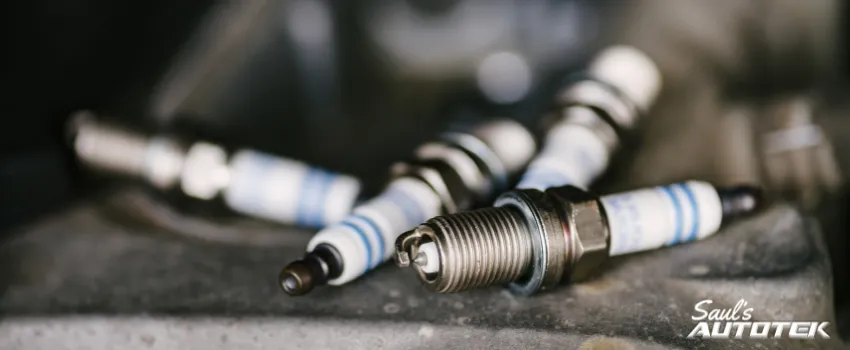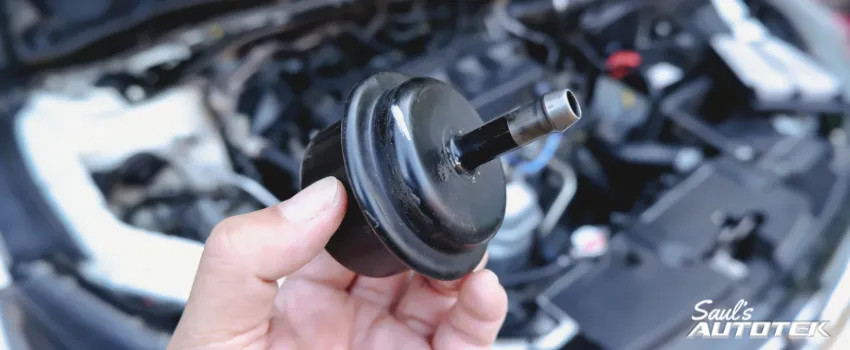Hi, there. I’m Saul Reisman here at Saul’s Autotek, and today we’re in front of this 2006 Ford Expedition because we’re going to talk about something that you haven’t heard about in a while. Cash For Clunkers.
A few years back, there was a government program called Cash for Clunkers. Now, I know it seems a little dated that I’m talking about this because you’re going, “That was half a decade ago. Why does this matter now?” But it actually is still very relevant today.
One thing that we really pride ourselves in here at Saul’s Autotek is the SchoolHouse Rock! motto of “Knowledge is power”.
We want you to have all of the knowledge available to you at every moment regarding your automobile so that you can make the best decisions about it every time with zero financial vested interest in it. We want you to be able to make good choices, period. We want you to have happy cars.
The reason we’re going to talk about Cash for Clunkers, and this Ford Expedition that would have qualified for Cash for Clunkers, is we can explain how this still affects you today, five years down the road. Now, when the Cash for Clunkers program was put on the road, it was designed to be an economic stamina program to help boost the U.S. economy, get people to buy new cars and support Detroit, which was not doing so hot at that time, and continue that cash flow. Unfortunately, the way they did the process didn’t really work very well. They forced purchases of motor vehicles that were deemed clunkers based on their fuel economy standards, and they removed them from the road.
Now, normally when we say a vehicle has been removed from the road, it means that either it was crashed and then it was a total loss, and as a result, an insurance company bought it or a junkyard bought it, or that insurance company bought it and sold it to a junkyard, meaning even though the car is crashed, the parts are still available. They’re just in a junkyard somewhere if you want to pay somebody to pull them apart or go spend a few bucks and take your own tools and pull them off yourself. Meaning if you owned a vehicle that was eligible for Cash for Clunkers, and your vehicle didn’t get purchased back, you didn’t opt to go buy a new car and take those major financial incentives, you kept your old car, now the parts for those cars, instead of being in junkyards, literally got destroyed.
During the Cash for Clunkers program, they put sodium silicate as a liquid, which is literally pellets of liquid glass inside the engines of these cars and ran them until they completely seized and stopped working. The intent of that was so that these cars could never be made to run again. The reality is, this severely penalized people that are less financially stable in the United States because the people that were originally driving “clunkers” were those that did not have the best financial situation to begin with.
If we look at it across the board, the vehicles that were the least fuel efficient, and often as a result were just the oldest on the road, are typically owned by people who have less money. Newer cars are owned by people who have more money. Not really a big shocker there. The shocker, however, is that we took cars away from people who are less financially stable, and we put them into brand new cars. We told them, “This is an economic stimulus. You got a brand new car now.” The reality is, the rate of repossessions of those vehicles was four times the normal national average.
As soon as Cash for Clunkers happened, they literally financed people who shouldn’t have been financed for cars, just like when the subprime mortgage market happened in 2008 with homes, and as a result, those cars got repossessed by the hundreds of thousands. This then flooded the used market. New car sales tanked, which was the exact opposite of what the intent of the program was. Used cars became incredibly valuable, and dealers were making, three, five, even $10,000 per car selling used cars.
And the people who originally had a poor, older, less fuel economy car, now have no options because they either bought a newer car that they now can’t afford that got repossessed, or they kept their older car. And now that it needs repairs, like this ’06 Expedition that needs a transmission, instead of being able to go to a junkyard and buy a used transmission for 150 to $350 as opposed to getting a rebuilt or a new one for several thousand dollars, all those old, rebuilt or salvaged ones are gone. They were filled with liquid glass. The government crushed them. You can’t have them.
As a result, the people who had no money, to begin with, ended up getting cars that were repossessed or ended up being a worse financial spot to be able to take care of their car because now the parts are substantially more expensive. A used transmission for this vehicle five years ago was literally $150, and today it’s 1,200 for the exact same part. The reason I want to talk to you about this is because the Cash for Clunkers program had widespread ramifications around the United States and around the world.
It affected people financially in many different realms in all different walks of life. Whether it was wealthy people that bought newer vehicles because they thought that it would be a better plan, poorer people that got incentivized to buy better vehicles that ended up losing them and/or being unable to repair their vehicles down the road, these are things that we saw at that time before this program hit the ground, and we warned owners about.
If you’ve got a concern about your vehicle, or if you’re worried about an automotive based decision, you’re looking at purchasing a vehicle or maybe another program like this comes out in the near future, we encourage you to give us a call here at Saul’s Autotek. We’re open 365 days a year at 303-919-7769, and we will always take your call and answer any questions you have. We won’t charge you a penny for our advice because we stick to that motto, “Knowledge is power”.
Come and see us here at Saul’s Autotek. We’d be happy to keep you on the road and make sure that you have the best financial incentive to keep this on the road as cheaply as possible without ending up in a situation of either of these cars before.
If you’ve got questions or concerns, we’ll be here for you. Saul’s Autotek
Schedule Your FREE diagnostic Subaru Outback Auto Repair Upkeep and Repair Appointment
Check out Our Reviews On Yelp! And Leave A Great One For Us!
Join Our Conversation on Facebook
Explore Our Exceptional Denver Auto Repair Services
- Brake Repair Service
- Suspension Repair
- Steering Repair
- Engine Repair
- Automotive Air Conditioning and Heating Repair





